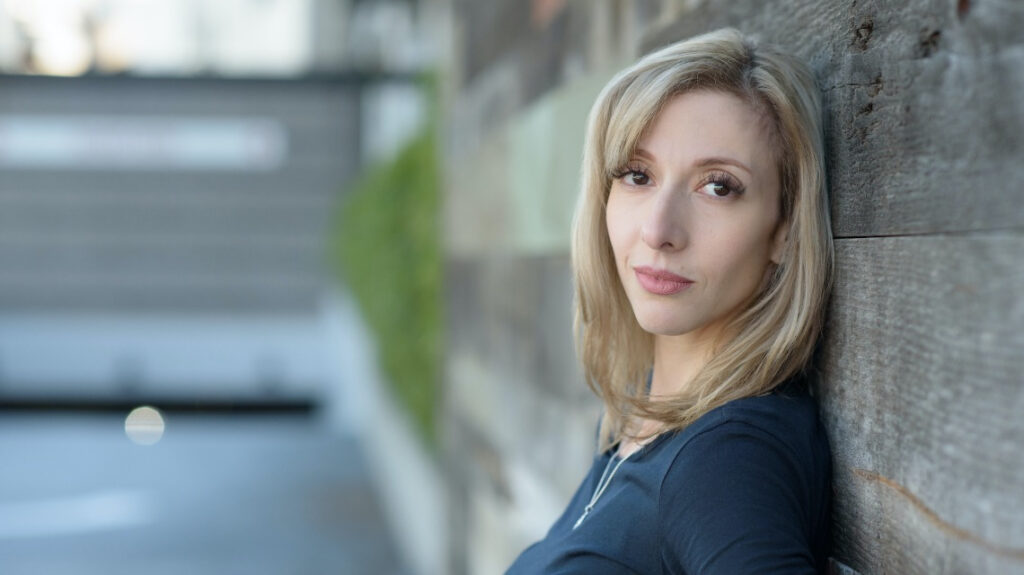
In discussions of race, racism, and identity, Jewishness is a contested category. Particularly in the U.S., Jewish people are often considered white; they are framed as a religious group, rather than an ethnic one. However, this categorization can make antisemitism–and Jewish people themselves–invisible in both academic and popular discourses.
Associate Professor of English Mara Lee Grayson’s new book, Antisemitism and the White Supremacist Imaginary: Conflations and Contradictions in Composition and Rhetoric (Peter Lang, 2023), explores that erasure and its impact on Jewish scholars. As a Jewish woman, Grayson says the ideas within the book had been “percolating” within her for years, and that she wanted to write the book to better understand her own experiences.
“A lot of discrimination happens on covert levels that are difficult to identify,” Grayson says. “I didn’t feel there was a space in my discipline to talk about that.”
Throughout 2021, she conducted phenomenological research–which uses individuals’ perspectives in order to understand or describe a specific phenomenon–by interviewing 13 Jewish-identified faculty members about their lived experiences. Many said that Jewish discourse, and the way they learned to read, write, and talk in Jewish cultural spaces, is what led them to the field of rhetoric, composition, and writing studies.
“Yet when these same faculty members and students entered the discipline, they didn’t see any explicit representation of Jewish discourses in the field,” Grayson says.
“One participant called the absence ‘bizarre.’ There is, in fact, a substantial history of Jewish influences on rhetoric and composition, from collaborative pedagogy and critical analysis to writing center practice. But it’s made invisible.”
In addition to detailing how Jewish scholars’ influence has been erased within her discipline, Grayson’s book also documents the resistance that Jewish scholars face when they engage in cultural ways of communicating. Examples include direct speech, emotion-focused storytelling, “cooperative overlapping”–people speaking at the same time to make meaning of the same thing–and the questioning of the status quo.
“In predominately white or Christian spaces, these practices are conceptualized as rude or impertinent,” Grayson says. “I found in my interviews that Jewish faculty do not find communication with colleagues as smooth or accessible as they would like.”
Grayson is a prolific researcher, writer, and teacher of racial literacy and critical whiteness. Her scholarship has largely centered on antiracism practices, particularly in teaching writing and composition. With her new book, Grayson hopes to bring Jewish experiences to the forefront of her academic discipline.
“When we think of multicultural approaches in education, Jewish people have been left out,” Grayson says. “Despite our experiences, dominant narratives associate Jewish people with privilege and power. The problem is displacement. We become this convenient ‘other’ that can be fit into whatever categorization is needed.”
She emphasizes that Jewish experiences must be included in educational settings, and that more work is needed to make academic spaces safer for Jewish people. Grayson also points out that academics in the fields of rhetoric and composition are particularly equipped to help dismantle antisemitism.
“Most antisemitism happens on rhetorical levels–through language, codes, and symbols,” she says. “Our discipline has the tools and the frameworks to actually understand how antisemitism is constructed and disseminated. We have a responsibility to take the lead on some of that work.”
Grayson further points out that elevating Jewish perspectives is only half of the equation. The other necessary part, she says, is examining the entities that perpetuate inequities.
“I want people to realize that Jewish people exist in a society not constructed for them,” Grayson says. “Our society purports to be secular, which allows it to avoid having to take any accountability or responsibility for Christian hegemony.”
“We have to be able to identify these things before we can address them fully.”









